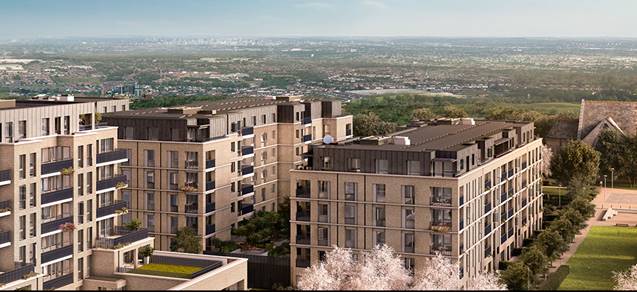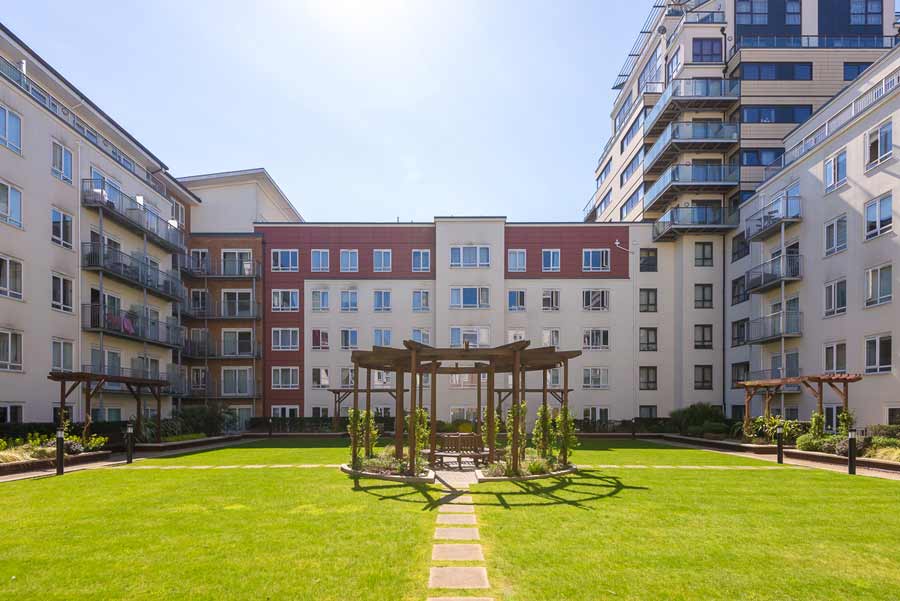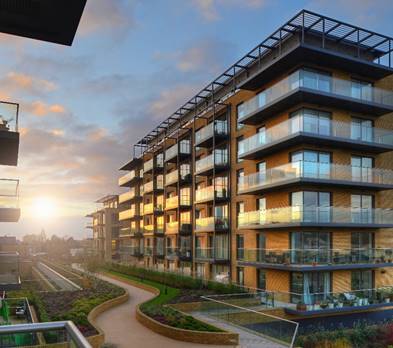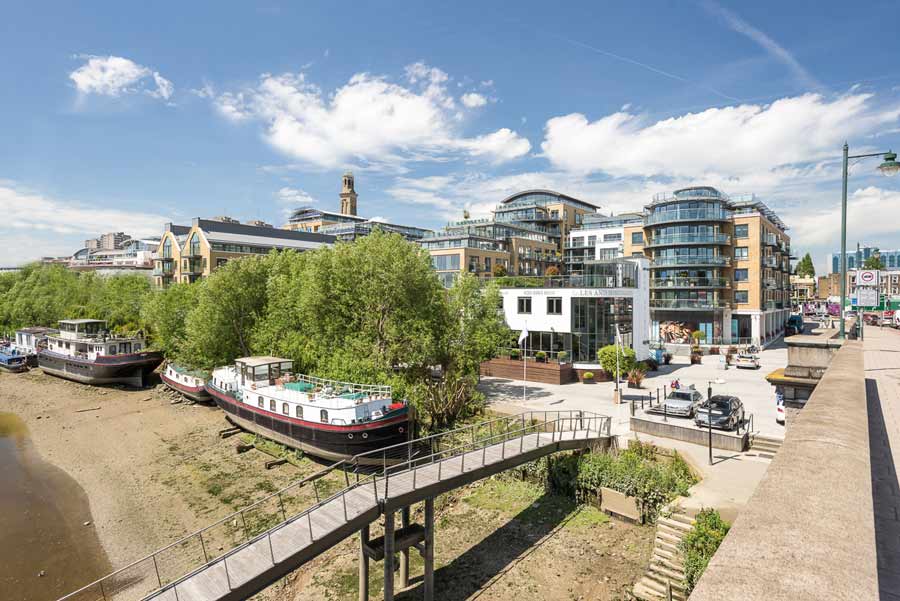- Selling
- Buying
- Landlords
- Renting
- New homes
- House prices
- International services
International offices
China, Hong Kong SAR, India, Indonesia, Malaysia, Middle East, Pakistan, Qatar, Singapore, South Africa, Thailand and Turkey
Learn more - Contact
- News
- Contact
- About us
- My B&R
Gentrification of London
- Landlords news
- 09.03.16
- Benham and Reeves
|
Getting your Trinity Audio player ready...
|
There is much more to gentrification in London than SUVs and expensive coffee. Outside of Zone 1, the capital is moving away from the class distinctions that used to associate different neighbourhoods with specific professions with areas that were once off limits now major targets for those willing to think outside the box. In terms of infrastructure and demographics, the capital is changing and gentrification is simply a way in which we are all adapting to this change. With this in mind, there are three main factors dictating where the rental hotspots will be in the near future – transport, technology and the Thames.
London transport

One thing that can be gleaned from a quarter century of regeneration is that, in London, a total commitment to improving transport links is a non-negotiable component of the process. Hard lessons were learned in the early Eighties when Canary Wharf was touted as the answer to London’s accommodation and business problems without being properly connected to the wider world. It was only when the Jubilee line extended to Docklands and the DLR connected to London City Airport and Lewisham, that the full potential of the area was realised. There is no such problem with the latest revolution in London transport. The Elizabeth Line is a radical undertaking that recognises not all major commercial activity has to be centred in Zone 1 and that many businesses need a more flexible transport system.
More commonly known as Crossrail, the Elizabeth Line initiative is set to transform many areas of outer London as its network of high speed trains will reduce commuting times by half. Connecting Heathrow Airport directly to a state-of-the-art transport hub in Canary Wharf is just one of Crossrail’s many advantages. It’s impressive statistics include being able to provide 3.3 million square feet of space for residential, office and retail use, with the new station and 57,000 new homes being constructed along the route.
Woolwich station is set to become a major southeast London landmark and will be integrated into a 5,000 housing development called Royal Arsenal Riverside. The Elizabeth Line is also transforming West London with areas such as Acton and Hanwell becoming prime residential areas for those attracted by the increased proximity to their places of work. Hanwell, in particular, looks like good value, with 118 one and two bedroom apartments in the brand-new St Bernard’s Gate development, located just 15 minutes from the West End via the new route.

Intrepid property developers excel in marking out gentrification possibilities in even the most unpromising situations. Six years ago, Beaufort Park was a disused airfield situated next to an unappealing 1970s housing project. Today the area has high-specification new apartments to rent within a five-minute walk from Colindale station and the Northern Line. The quality of appointment and the on-site facilities such as gym, car park, business suite as well as other amenities make this one of our most sought-after rental destinations.
Typical rents at Beaufort Park (March 2016):
Studio apartments from £230 per week
One bedroom apartments from £300-£330 per week
Two bedroom apartments from £340-£450 per week
The new Tech City

At the start of the new millennium, a phenomenon known as the “Shoreditch effect” began to make itself known. Young creatives burst onto the scence, bringing new ways of working and doing business. Needing cheap offices, studio space and fast broadband, they eschewed the glass towers of the City in favour of the disused warehouses of nearby Shoreditch. These entrepreneurs had different tastes and recreational needs to the bankers and brokers of the Square Mile. Street food pop-ups, microbreweries and contemporary art installations soon followed and property prices started to rise.
It was a rise that in turn created a ripple effect, as successive waves of tech start-up companies sought cheaper accommodation further out but not too far away from the Silicon Roundabout of Old Street. Dalston, Stoke Newington, Hackney and Bethnal Green soon followed the same pattern, transforming themselves from inner city black spots to hipster enclaves. There were concerns that these neighbourhoods would fall into decay as the trend surfers moved onto their next project, especially after the memory of the 2012 Olympics had faded, but this discounts the fact that the “Techpreneurs” of a decade ago have now settled down and started families. Needing more space and still needing to be a bike ride away from their desks, they’ve put down roots and are generally seen as a positive influence on the cultural health of their adopted areas.
East London tends to get a lot of mentions in this regard, owing to the fact that as an area it has come so far, so fast. A traditionally industrial district, it was heavily bombed during WWII and subsequently neglected as its inhabitants were all rehoused in well-intentioned, but ultimately disastrous Sixties housing projects. However, the success of the Docklands developments and the Olympic village opened up areas that had previously been outside the thinking of many corporate professionals. In quick succession, Mile End, Poplar, Stratford and Leytonstone were all targeted for redevelopment as cheap prices and improved transport links made them increasingly attractive.
Even South East London is receiving a makeover with the introduction of Kidbrooke Village, a vibrant property development built on the former site of an old social housing project. The development is set in tranquil communal gardens with fantastic on-site amenities and the area is now lined with artisan grocery stores, chic bars and independent bookstores, not too dissimilar from what you find in ‘hipster’ East London, but at much cheaper rental prices. Kidbrooke is also just a short car ride away from Blackheath and Greenwich, the latter is another area that’s seen huge growth in the last 10 years, receiving Royal Borough status in 2012
Typical rents at Kidbrooke Village (March 2016)
Studio apartments from £290 -£310 per week
One bedroom apartments from £330 – £390 per week
Two bedroom apartments from £390 – 410 per week
Three bedroom apartments from £475 – £650
Along the Riverthames

The banks of the River Thames have, for a long time, been a favourite site for blue chip developments. Sovereign Court in Hammersmith is a fine example of a luxury collection of apartments boosting the already desirable housing stock of period conversions in the area. Revamping disused docks, warehouses and power stations has become almost a routine occurrence amongst London’s new breed of property pioneers. Berkeley, St George, Galliard and Barratt have transformed the waterfront from Woolwich to Kew with spectacular high-rise apartments that provide magnificent views of the capital. Royal Arsenal Riverside, Greenland Place, London Dock, Neo Bankside, Battersea Power Station and Kew Bridge are just some of the locations that have ushered what was once a dreary picture of neglect into the 21st century. The proximity to price ratio of Greenland Place is sure to excite the interest of those who work in London’s twin financial centres. Situated halfway between The Shard and Canary Wharf, it offers affordable luxury overlooking the serene expanse of the newly regenerated Greenland Dock.
Typical rents at Greenland Place (March 2016):
One bedroom apartments from £325-£360 per week
Two bedroom apartments from £400-£430 per week
Three bedroom apartments from Beds £475+ per week
In London, the term “gentrification” throws up a number of evocative images and talking points, and the fact that previously unloved areas of the capital can be turned around so quickly is certainly exhilarating. We all want our streets to be clean and crime-free with access to excellent amenities and are, at the same time, wary of increased traffic and too many faceless high-rise new builds. London’s developers have listened to their prospective tenants and have become adept at treading the fine line that exists between the commercial and the aesthetic.
If you are looking to rent a property in one of London’s emerging new locations, contact our branches who will be only too happy to help.
Sign up to our newsletter
Subscribe
How much is your property worth?
Media enquiries
About the Author
Established in 1958, Benham and Reeves is one of London’s oldest, independently owned property lettings and sales agents. With specialism in residential sales, corporate lettings and property management in prime areas of London, the company operates from 21 prominently located branches and 14 international offices.View all posts by Benham and Reeves














